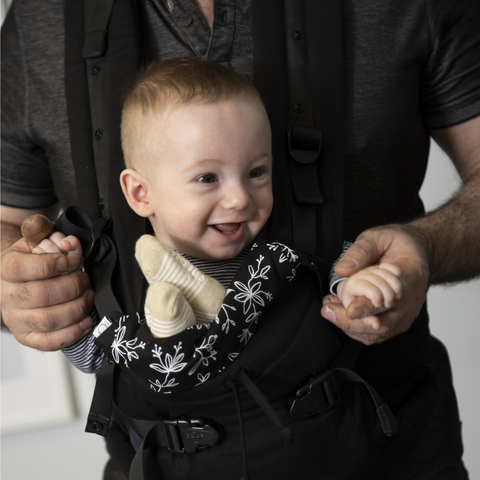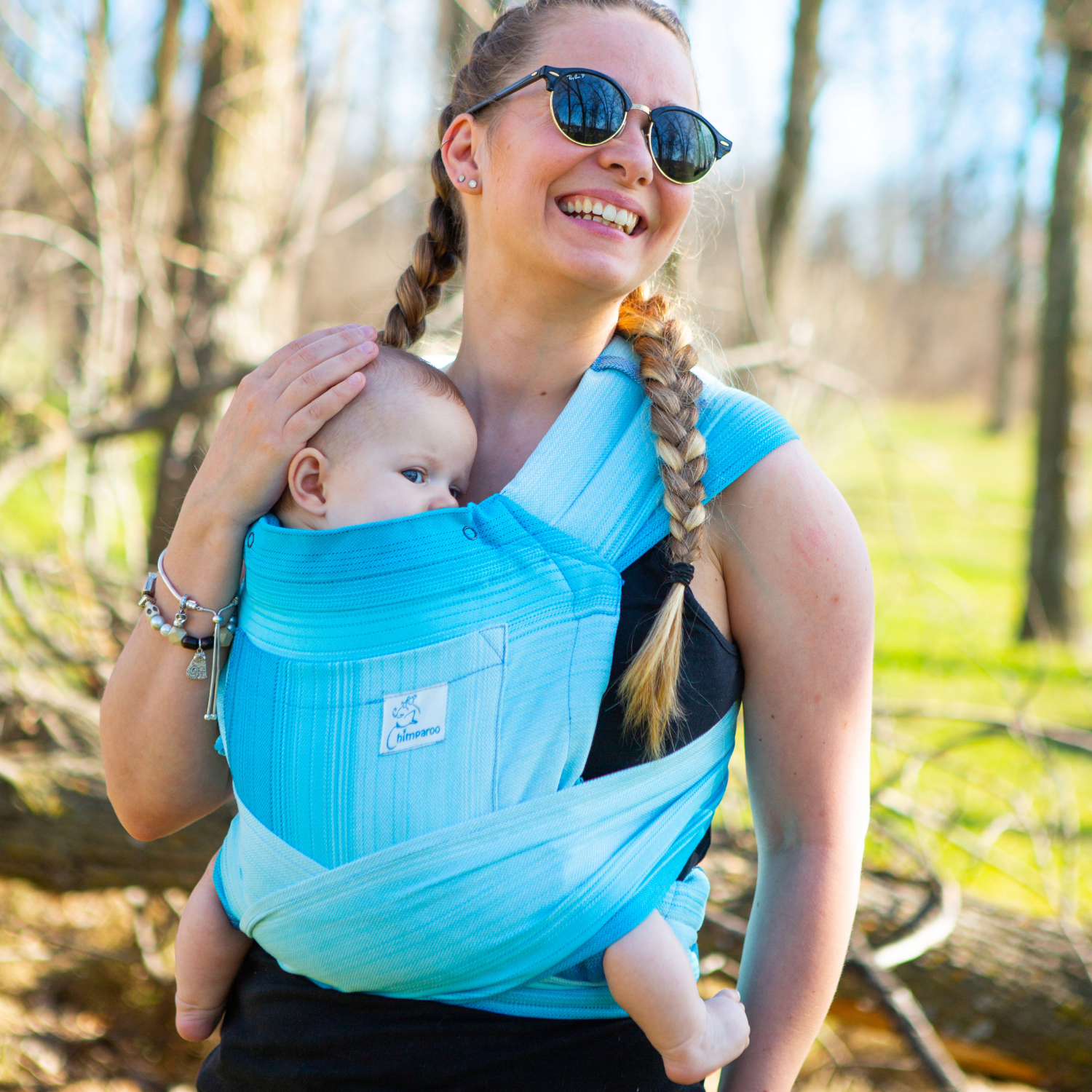A baby’s arrival is often hard on the wallet! To limit your spending, choosing second-hand items can be an excellent option. For eco-conscious parents, buying second-hand items is also a great way to welcome a baby in the family with an eco-responsible gesture.
Before buying your baby carrier, why not start by asking your friends and family if they have a baby carrier they could sell, give or loan to you? Babies grow so fast that their clothes, toys and other baby items don’t get used for long, and parents are more and more inclined to find ways to give them a second life. There are many trading and selling platforms and groups on the Web, let’s take advantage of them!
However, there are elements to take care into consideration before buying second-hand. Here are 5 tips for choosing a second-hand baby carrier.
1. Has the baby carrier been recognized as safe?
Better safe than sorry! To verify if the baby carrier you are looking for is safe, check the certifications that the product holds and if it is part of a lot that has been recalled.
For baby carriers, there are several certifications that attest that the product is safe: International Hip Dyslexia, OEKO-TEX Standard 100, Confiance Textile and Mom's Choice Awards.
Next, is the item you are interested in part of a recall? A product is recalled when it has been found to be unsafe or to be a health hazard. To know if the baby carrier you’re interested in has been recalled, look it up on healthycanadians.ca.
Chimparoo holds all of the listed certifications and not any Chimparoo baby carriers currently on the market (either new or used) are part of a recalled lot.
2. What is the state of the fabric?

The quality of the fabric is very important. Cotton is very resistant and can last a very long time, but spandex will wear out over time. Think of how a bathing suit’s spandex gets damaged and breaks when given enough time. Many of our products are made of soft 100% organic cotton. How the fabric has been cared for will also have an impact on its fibers’ wear. If it was washed in warm water and dried with hot air, chances are the fabric will have suffered some wear and tear. To verify the state of the fabric, test its resistance by pulling on the components that carry the weight of the baby
Image: A baby in a PöpNGo baby carrier, worn by his dad!
3. What is the condition of the seams, buckles and straps?
Health Canada reminds you to verify your baby carrier’s condition each time you use it. Make sure that no seams have come undone, that no straps are torn and that no components are broken. Should you buy a second-hand Chimpäroo product with light wear, know that we have a repair service. Fees will be applied for the repair and shipping of the baby carrier. For more information on this service, please inquire at info@chimparoo.ca
4. What are the reviews on the item’s brand?

Is the brand renowned for the quality of its baby carriers? What are people’s opinions on the brand? A little research always goes a long way. You can also read up on the evaluation of baby carriers on Which?’s website. Another way to give you an idea is to check the testimonies on the baby carrier brand website and on their social media.
Image: A mother using the Snüg baby wrap.
5. Does the baby carrier come with the manufacturer’s instructions?
You should have all of the necessary information at your disposal to safely carry your baby. If you don’t have access to its instructions in a paper manual, see if you can find them on the manufacturer’s website.
Chimparoo has created videos with explanations on every of our products. They are available on our YouTube page. Instructions are also provided on each of the product pages of our website.
*******************
For more general recommendations on choosing a baby carrier, read 7 Criteria to Choose Your Baby Carrier or Wrap.
On our Frequently asked questions page, you’ll find interesting resources to develop your babywearing techniques. You can also contact us here.


Share:
New fathers: 5 tips to accompany you along paternity
4 tips for babywearing your twins!